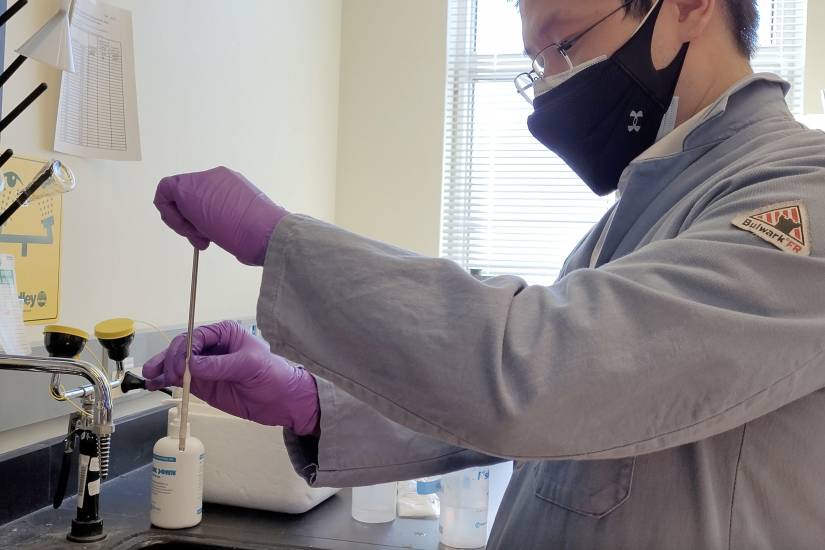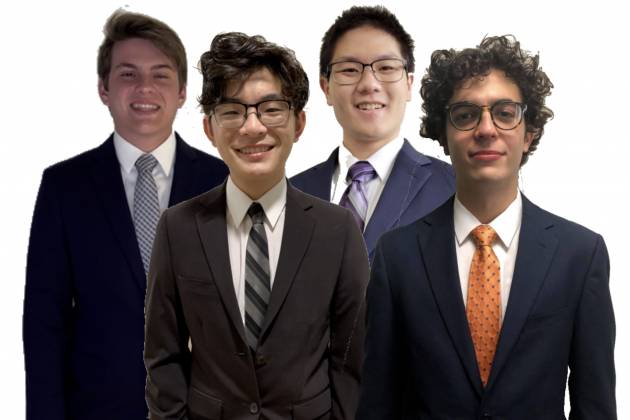A team of Johns Hopkins University students are among the finalists in the Collegiate Inventors Competition for inventing a device to reduce pain from nerve damage in people with amputations.
Johns Hopkins has had finalists or winners 37 times in the annual competition, which was founded by the National Inventors Hall of Fame to encourage innovation and entrepreneurship at the collegiate level.
Under the team name Innerva, the Whiting School undergraduates invented a funnel-shaped biodegradable device to help direct the regrowth of nerves and prevent the formation of tumors called neuromas that cause severe pain in up to 80% of amputation patients.
The Whiting School students—materials science and engineering senior Bruce Enzmann, biomedical engineering junior Anson Zhou, and 2021 biomedical engineering graduate Michael Lan, who were later joined by materials science and engineering junior Juan Diego Carrizo—began the project after hearing from Johns Hopkins surgeon Sami Tuffaha about the challenges of targeted muscle reinnervation, a surgical procedure for facilitating nerve regrowth in amputation patients.


